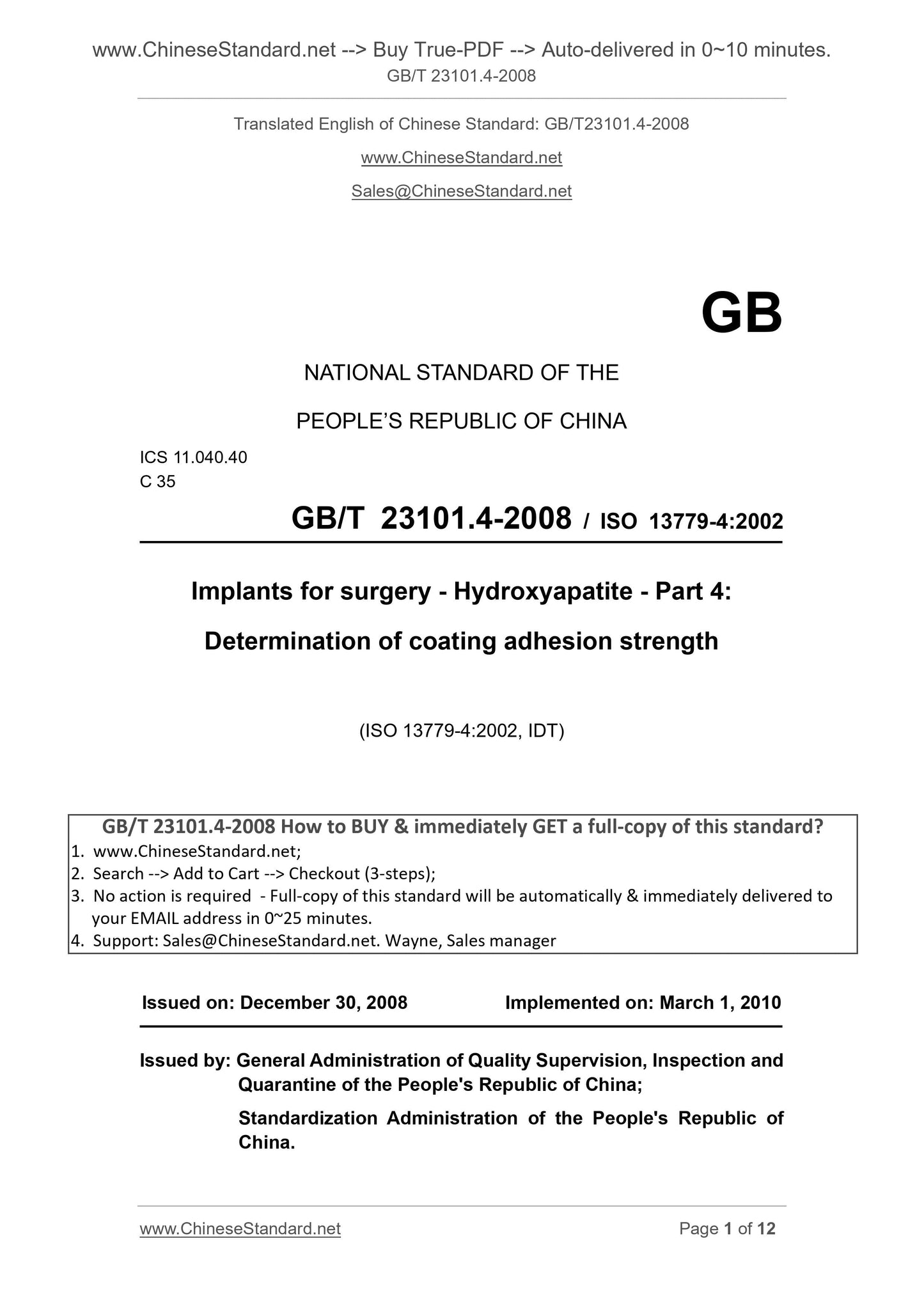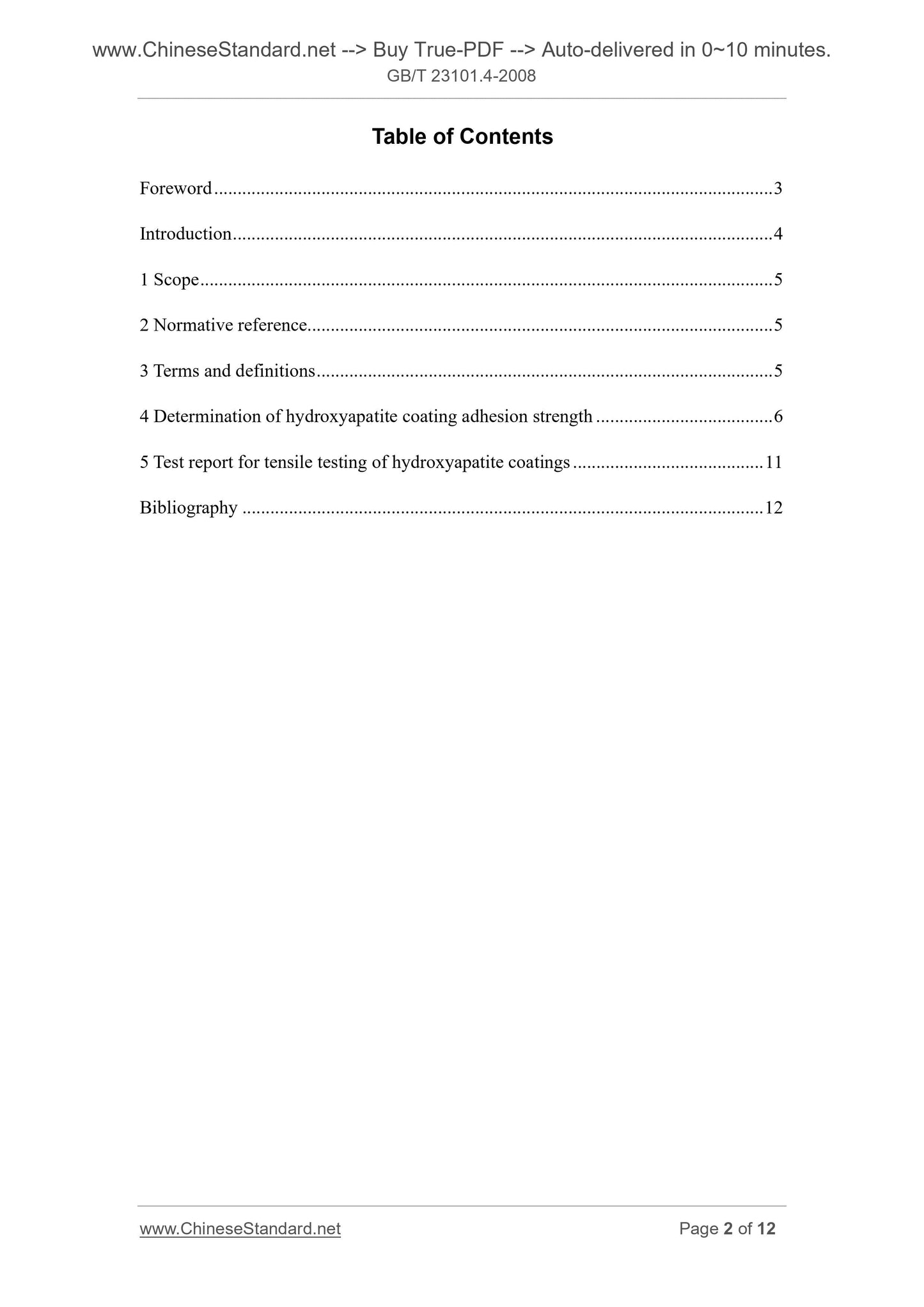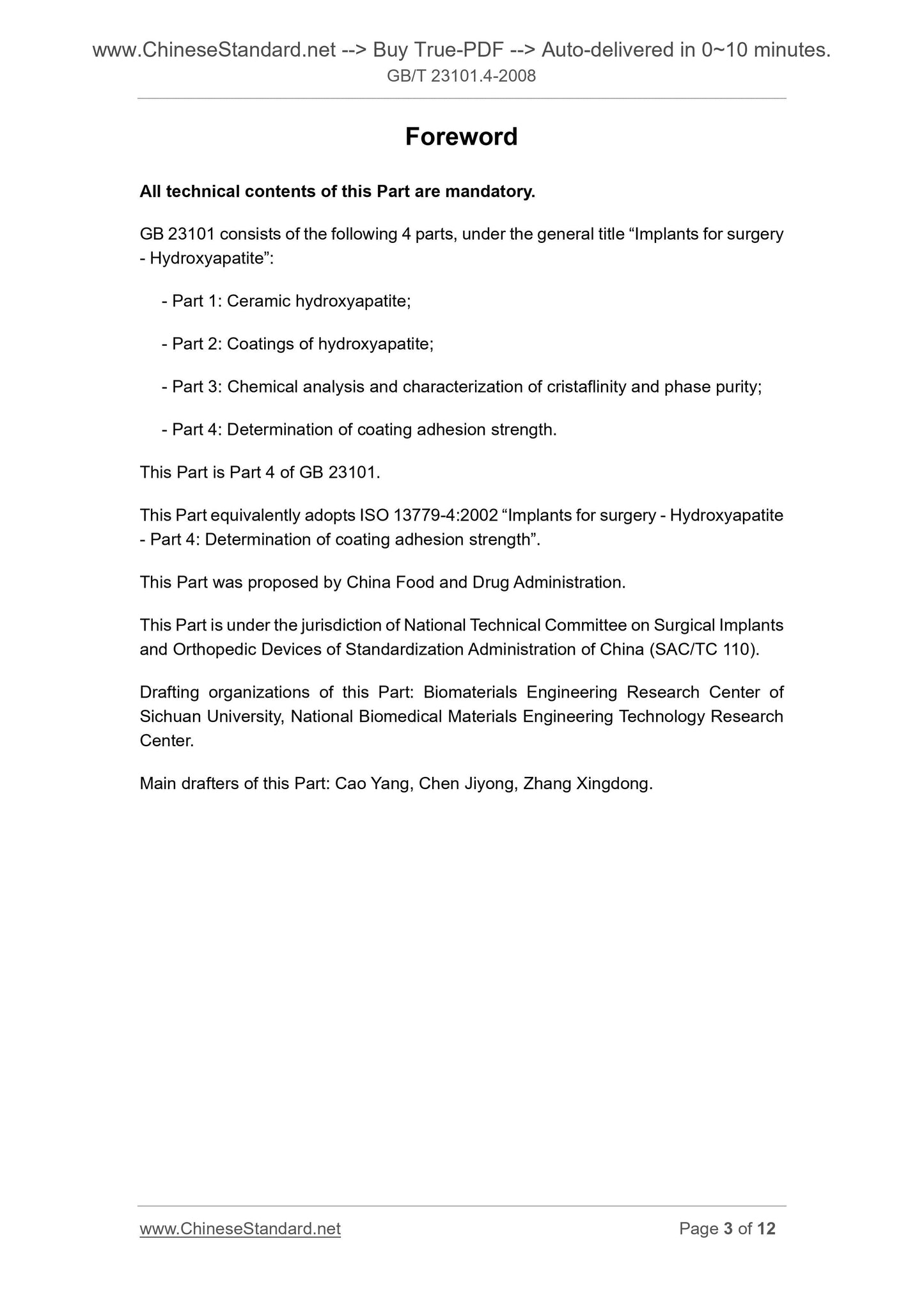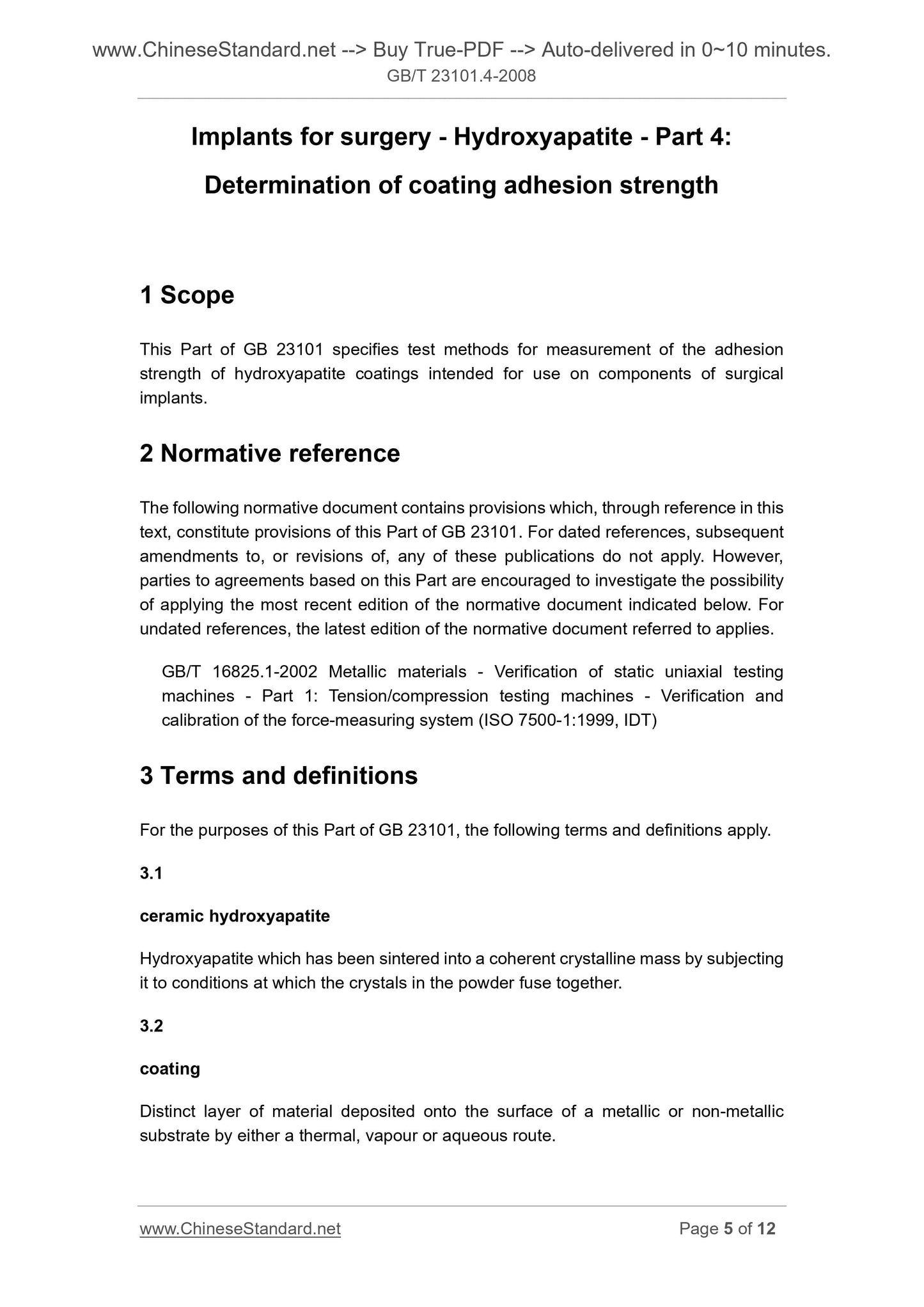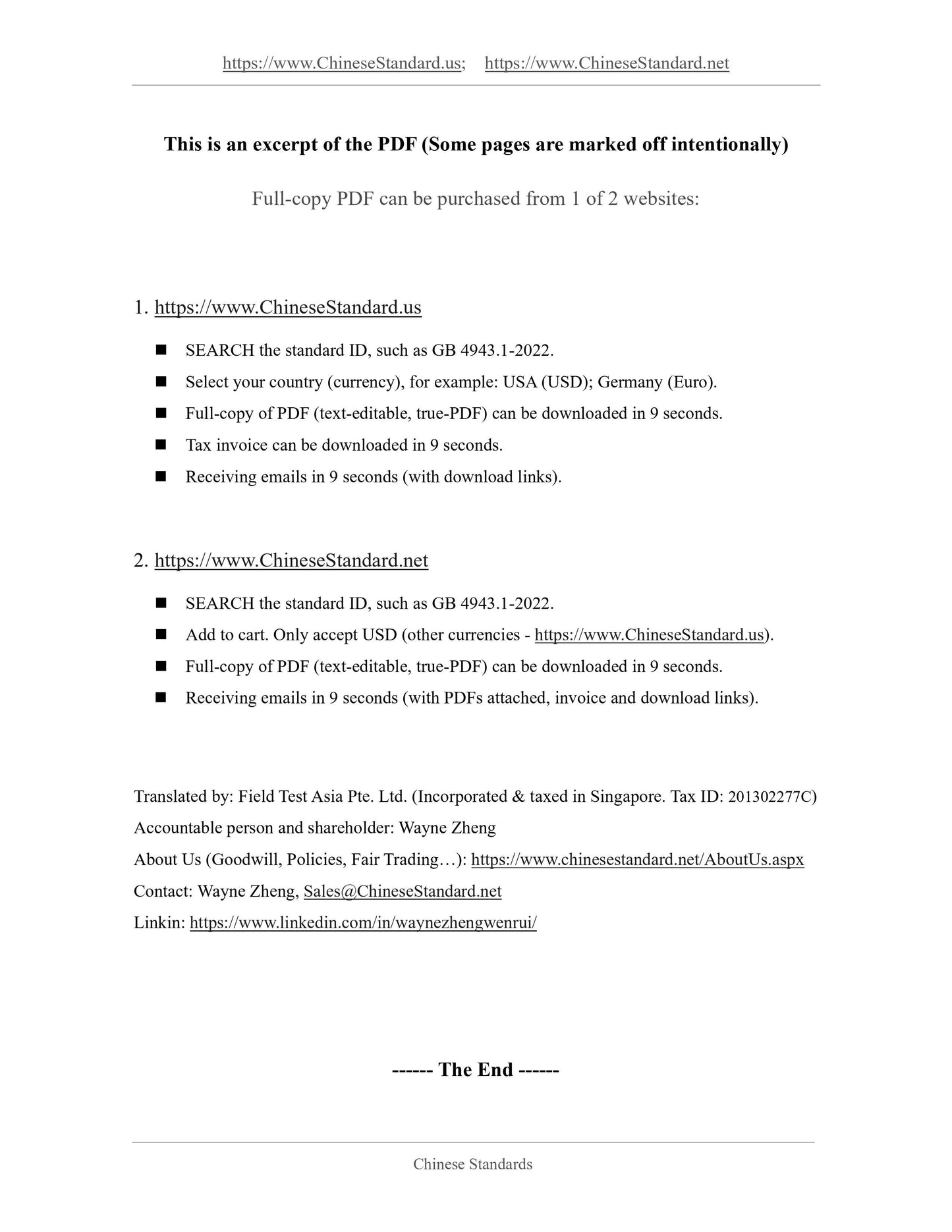1
/
of
5
www.ChineseStandard.us -- Field Test Asia Pte. Ltd.
GB 23101.4-2008 English PDF
GB 23101.4-2008 English PDF
Regular price
$85.00
Regular price
Sale price
$85.00
Unit price
/
per
Shipping calculated at checkout.
Couldn't load pickup availability
GB 23101.4-2008: [GB/T 23101.4-2008] Implants for surgery -- Hydroxyapatite -- Part 4: Determination of coating adhesion strength
Delivery: 9 seconds. Download (and Email) true-PDF + Invoice.Get Quotation: Click GB 23101.4-2008 (Self-service in 1-minute)
Newer / historical versions: GB 23101.4-2008
Preview True-PDF
Scope
GB 23101 of the measurement methods specified in this part of hydroxyapatite coating adhesion strength.Basic Data
| Standard ID | GB 23101.4-2008 (GB23101.4-2008) |
| Description (Translated English) | [GB/T 23101.4-2008] Implants for surgery -- Hydroxyapatite -- Part 4: Determination of coating adhesion strength |
| Sector / Industry | National Standard |
| Classification of Chinese Standard | C35 |
| Classification of International Standard | 11.040.40 |
| Word Count Estimation | 10,126 |
| Date of Issue | 2008-12-30 |
| Date of Implementation | 2010-03-01 |
| Quoted Standard | GB/T 16825.1-2002 |
| Adopted Standard | ISO 13779-4-2002, IDT |
| Regulation (derived from) | Announcement of Newly Approved National Standards No. 26 of 2008 (total 139) |
| Issuing agency(ies) | General Administration of Quality Supervision, Inspection and Quarantine of the People's Republic of China, Standardization Administration of the People's Republic of China |
| Summary | This Chinese standard relates to hydroxyapatite coating adhesion strength measurement method. |
Share
